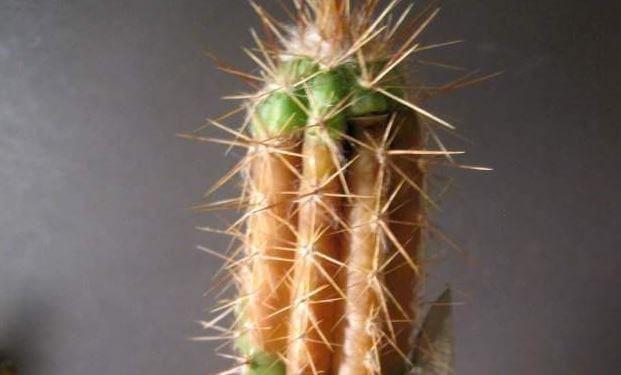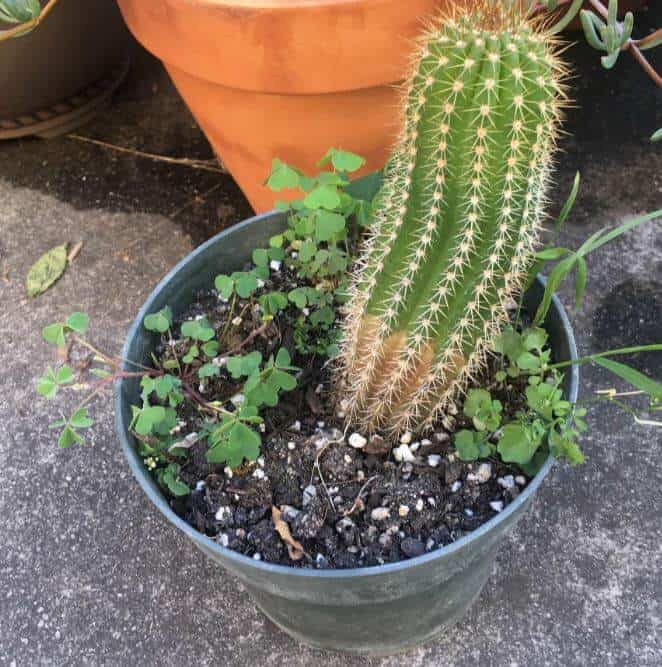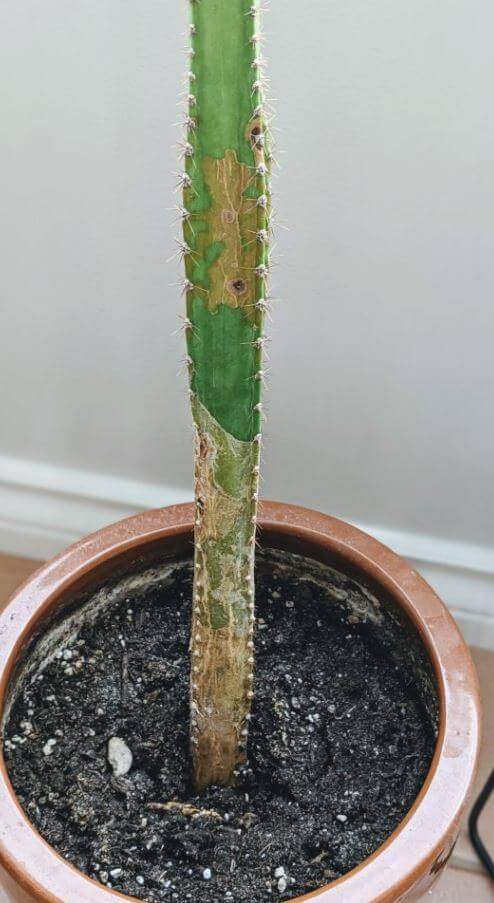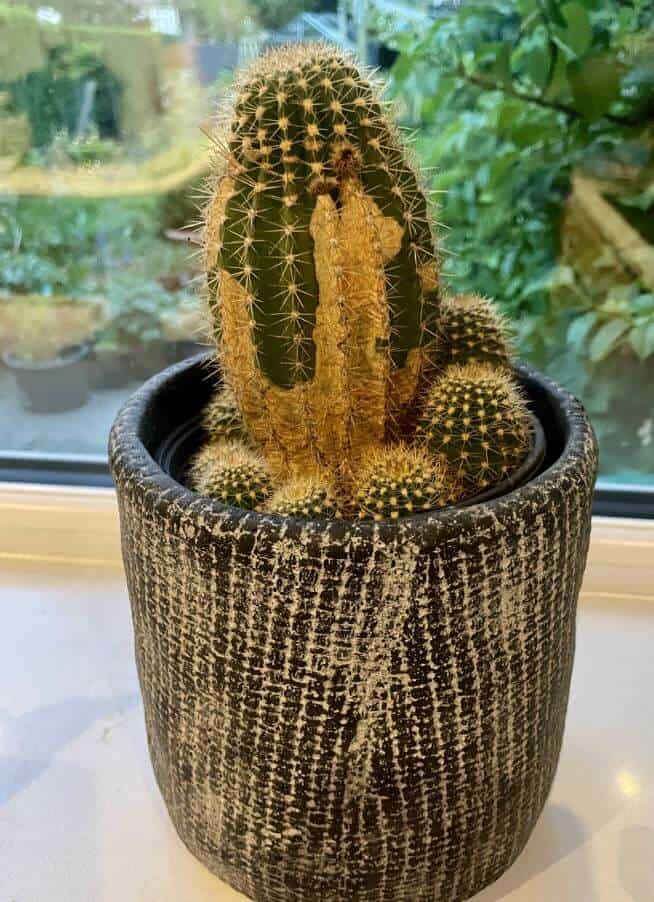Last Updated on July 27, 2023 by a Friendly Gardener
When a cactus appears to have a problem, it usually will be caused by one of a few issues. Causes may include excessive watering, excessive light, diseases, pest infestations, or aging. No one answer is valid for every situation.
Why Is My Cactus Turning Brown?

Overwatering
Believe it or not, cacti can suffer from overwatering, especially when they are cultivated indoors. With cacti and succulents in general, it’s always better to err on the side of underwatering as these plants do store some water within for drier times. Cacti do much better with too little water. Unlike other houseplants, it continues to absorb water as if it were in the desert. The more water you give, the more water your plant will attempt to absorb. When a cactus is overwhelmed with water, rot will set in.
What to do
Begin caring for your cactus by selecting an appropriate pot. Clay or terracotta pots are best as they sweat, wicking away excess moisture. Also, consider the pot’s size. Pots that are too large require more soil which can retain more moisture.
If you notice your cactus turning brown, try letting it dry out completely before you water it again. Do not base your impression of how dry your cactus is on the topsoil as it could be retaining water deeper in the soil bed or at the container’s bottom. Try raising your container to feel how heavy it is. Dryer soil will be lighter in weight.
Insufficient Light

Inadequate light can also be a problem. Your plant will hint at this because new growth will tend to be long and leggy as if reaching toward the light source. Watch for this early on, so you can remedy the situation quickly. Also, check the cactus’s position within its container. If it is too far down into a container, it may not be receiving adequate light and air circulation. This is a common risk when the potting soil used compacts.
What to do
Change your cactus’s position placing it nearer to a window or light source. If you feel the soil bed is too low, try repotting your cactus and adding fresh soil to give it increased height.
Excessive Light Exposure
It may seem odd, but cacti can receive too much light particularly when located in direct sunlight such as in a window. Brown spots on cactus tips can be an indication of sunburn. Spots can vary in color from brown, yellow, red, dark orange, or even rust-hued. This type of spotting usually indicates that a cactus is sun-stressed.
What to do
Move your cactus to a location with very bright indirect light.
Symptoms of Cactus Rot

Brown spots on cactus can also be a sign that your plant has root rot. If the brown spots are mushy and soft to the touch, your plant has probably begun rotting inside and symptoms are appearing outwardly.
What to do
Your best option, in this case, is to propagate a new plant. Slice off a healthy portion or stem using a sharp gardening knife or shears that have been sterilized. It’s vital to cut a part of the cactus that is not affected by rot. Set it aside until it calluses over and then place it in a clean, sterilized pot with fresh potting soil. Dispose of all parts of the plant affected by rot.
Diseases and Fungal Infections
Browning cactus can also indicate that your plant is ill or has an infection. Brown patches and spots are typical symptoms of the disease. If the brown patch feels hard to the touch, this may indicate a fungal infection and not root rot. Other symptoms of fungal infections include browning lesions that form small holes although these symptoms are more common in wet and cool conditions. Fungal infections are usually not fatal, but the spotting is permanent.
What to do
Treat your cactus with a fungicide. Neem oil is a natural fungicide and pesticide. This should stop the spots from spreading but the scarring will remain.
Pest Infestations
Pests like cacti just as they like houseplants. Scale insects are sap suckers that when they take up residence on your cactus, will create small brown spits that are hard in texture.
Brown spots that feature small white bumps are indicative of a mealybug infestation. These need to be treated immediately. Webbing near brown spots indicates spider mites.
What to do
Scale insects can be removed manually by scraping them off with a fingernail. If they are too hard to scrape, treat them first with 70% isopropyl alcohol and then scrape away. Pest infestations, including spider mites and mealy bugs, can be treated by using neem oil spray or a mixture of 50% water and 50% isopropyl alcohol.
An Aging Cactus

The bottom of the cactus turning brown may mean that your plant has begun to ‘cork’. This is a natural characteristic of aging plants. If the brown area appears to be woody and fibrous in texture, then congratulations, your cactus is mature because it has been well cared for. Cactus corking occurs as the plant matures to strengthen stems as the plant continues to grow.
A Final Thought

There are several reasons you may have a browning cactus. To ensure your cactus’s health and longevity, it’s important to identify the cause of browning and intervene if necessary. Do not experiment with treatments. It’s much better to identify what is causing the symptoms and treat the specific issue. Your cactus may just be aging and not require any intervention. Examine your plant weekly so that if an issue develops, you can take steps to nurse your plant back to health early on.

